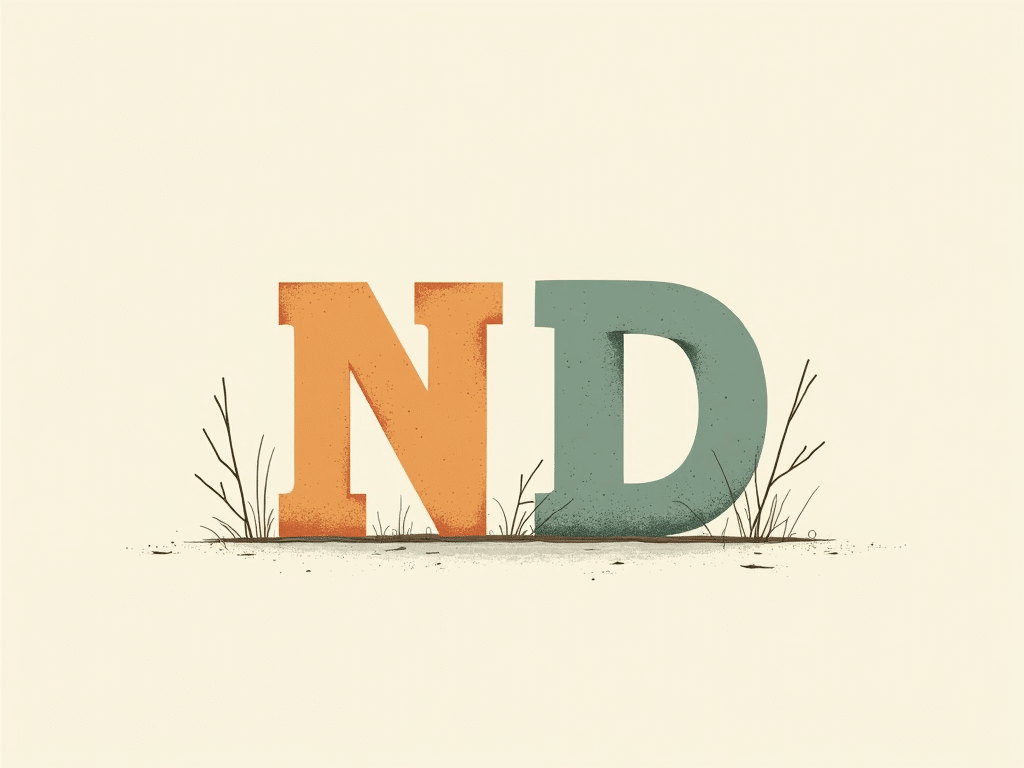In the world of digital communication, slang, acronyms and abbreviations have become an integral part of our daily conversations. One such acronym that frequently pops up in various contexts is “ND.” But what does ND mean, and how is it used across different platforms and industries? Let’s dive into the multifaceted world of ND and uncover its various interpretations.
Primary Meanings of ND
ND is a versatile acronym that can have several meanings depending on the context. Here are the most common interpretations:
- No Date
- No Difference
- North Dakota
- Neutral Density (in photography)
Let’s explore each of these meanings in detail.

No Date
In academic and publishing contexts, ND often stands for “No Date.” This usage is common when citing sources or referencing materials where the publication date is unknown or not specified.
Example:
“Smith, J. (n.d.). The impact of social media on modern communication. Retrieved from [URL]”
No Difference
In scientific or statistical contexts, ND can mean “No Difference.” This is often used when comparing two or more groups or variables and finding no significant statistical difference between them.
Example:
“The study found ND between the control group and the experimental group in terms of reaction times.”
North Dakota
ND is the official postal abbreviation for the state of North Dakota in the United States. This usage is common in addresses, official documents, and any context referring to the state.
Example:
“Fargo, ND 58102”
Neutral Density (in photography)
In photography and filmmaking, ND stands for “Neutral Density.” This refers to filters used on camera lenses to reduce the amount of light entering the camera without affecting the color of the image.
Example:
“I used an ND filter to capture the waterfall’s smooth flow in bright daylight.”
ND in Text Messaging and Social Media

In casual digital communication, ND can take on different meanings depending on the context of the conversation. Here are some common uses:
- “No Drama”
Example: “Let’s keep this ND and just enjoy the party.” - “Not Done”
Example: “Have you finished the report? – Not yet, ND.” - “New Day”
Example: “ND, new opportunities! Let’s crush it!”
It’s important to note that these casual uses of ND are not as standardized as the primary meanings and can vary among different social groups or platforms. For more on social media acronyms, check out our articles on RS meaning and YHU meaning.
ND in Academic and Professional Settings

In academic and professional contexts, ND is most commonly used to mean “No Date” or “No Difference.”
No Date in Citations
When citing sources in academic papers or professional reports, ND (often written as “n.d.”) is used when the publication date of a source is unknown or not provided.
Example:
“According to the World Health Organization (n.d.), regular hand washing is crucial for preventing the spread of infectious diseases.”
No Difference in Research
In scientific research or data analysis, ND might be used to indicate that no significant difference was found between groups or variables being studied.
Example:
“The researchers found ND in cognitive performance between the group that consumed caffeine and the group that didn’t.”
ND in Geography and Addresses
As we saw earlier, ND is the official postal abbreviation for North Dakota. This usage is crucial in addressing mail and official documents. When writing addresses for locations in North Dakota, always use “ND” as the state abbreviation followed by the ZIP code. This ensures proper mail routing and delivery.
ND in Photography and Filmmaking
In the world of visual arts, ND stands for “Neutral Density.” These filters are essential tools for photographers and filmmakers. ND filters are particularly useful in bright conditions when you want to use a wider aperture or slower shutter speed without overexposing the image. They’re often used to create smooth water effects in landscape photography or to achieve a shallow depth of field in bright daylight.
Other Less Common Meanings of ND
While we’ve covered the primary meanings, ND can have several other interpretations depending on the context:
- Notre Dame (university)
- Non-Disclosure (in legal contexts)
- New Driver (in some regions)
These less common meanings highlight the importance of context when interpreting acronyms like ND.
How to Use ND Correctly

To avoid confusion and communicate effectively, consider these best practices when using ND:
- Understand your audience: Ensure the recipient understands what ND means.
- Provide context: Always clarify if the meaning is not obvious from the conversation.
- Avoid overusing abbreviations: Overusing ND can lead to confusion in communication.
- Use in appropriate settings: Use ND in casual conversations, not in formal documents unless it’s a standard abbreviation in your field.
Remember, clear communication is always more important than brevity. If there’s any chance of confusion, it’s better to spell out what you mean rather than relying on the acronym.
Impact of ND on Digital Communication
The use of acronyms like ND has significantly influenced how we communicate online:
- Enhances brevity: In a fast-paced world, ND communicates quickly.
- Emphasizes authenticity: Using ND helps convey sincerity and truth.
- Encourages casual dialogue: Casual slang fosters informal and friendly interactions.
- Reflects language evolution: Shows how language adapts in modern communication.
These impacts demonstrate how acronyms like ND are shaping our digital conversations, making them faster, more casual, and more nuanced.
ND in Popular Culture
The acronym ND has made its way into various aspects of popular culture:
- Music: Some artists use ND in song titles or lyrics, often referring to “No Drama” or “New Day.”
- Social Media: ND is frequently used in hashtags and captions, particularly on platforms like Instagram and Twitter.
- Sports: In college sports, ND is often associated with the University of Notre Dame’s athletic teams, known as the “Fighting Irish.”
- Film and TV: Characters might use ND in dialogue to represent casual, modern speech patterns.
The Evolution of ND Usage
The use of ND has evolved over time:
- Pre-internet era: ND was primarily used as an abbreviation for North Dakota or in academic contexts for “No Date.”
- Early internet: As online communication grew, ND began to be used more frequently in casual contexts.
- Social media age: The rise of platforms like Twitter, with character limits, popularized acronyms like ND for quick communication.
- Present day: ND has multiple meanings depending on the context, reflecting the fluid nature of language in the digital age.
ND vs Similar Acronyms
It’s important to distinguish ND from similar acronyms:
- NA (Not Applicable): Used when a question or field doesn’t apply to a particular situation.
- N/A (Not Available): Indicates that information is not available or accessible.
- TBD (To Be Determined): Used when a decision or information is pending.
While these acronyms have distinct meanings, they can sometimes be used interchangeably in casual communication, which can lead to confusion. For more on similar acronyms, see our articles on ISTG meaning and TMB meaning.
Conclusion: The Significance of ND in Modern Communication
Understanding the various meanings of ND is crucial in our increasingly digital world. Whether it’s “No Date” in academic citations, “Neutral Density” in photography, or “No Drama” in social media, ND plays a significant role in efficient communication across different fields and platforms.
As language continues to evolve in the digital age, acronyms like ND serve as a reminder of how context-dependent our communication has become. They allow us to convey complex ideas quickly but also require a shared understanding to be effective.
Whether you’re a student citing sources, a photographer adjusting light exposure, or simply chatting with friends online, being aware of the different interpretations of ND can help you communicate more effectively and avoid misunderstandings.
FAQs About ND
Q: Is it appropriate to use ND in formal writing?
A: It depends on the context. In academic citations, “n.d.” (lowercase) is acceptable for “no date.” In other formal writing, it’s best to avoid acronyms like ND unless they’re widely recognized in your field.
Q: How can I tell which meaning of ND is being used?
A: Context is key. Consider the field or platform where you’re encountering ND, and look for clues in the surrounding text or conversation.
Q: Are there any negative connotations to using ND?
A: Generally, no. However, overuse of acronyms in communication can sometimes be seen as overly casual or potentially confusing.
Q: How has social media influenced the use of ND?
A: Social media has popularized casual uses of ND, such as “No Drama” or “New Day,” and has contributed to its spread across different online communities.
Remember, effective communication is about more than just knowing acronyms – it’s about understanding your audience and choosing the right words for the context. Whether you choose to use ND or spell out its meaning, the goal is always to communicate clearly and effectively.







